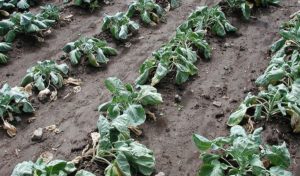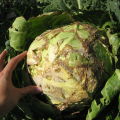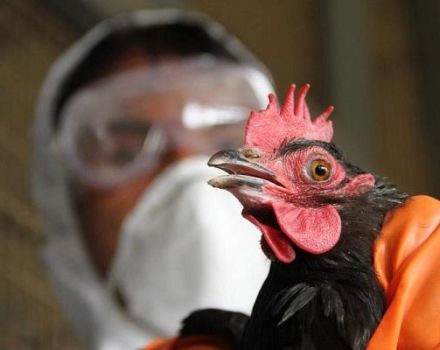Growing and caring for broccoli outdoors at home
For those who have already planted cauliflower in their garden, growing broccoli in the open field will not be a very difficult task. Exactly according to the same principle, you should choose a well-lit, during daylight hours, area with low soil acidity, and planting and care will please you with the absence of a large number of nuances and secrets. In order to grow broccoli in central Russia, it is not necessary to pile up greenhouses in autumn - harvesting, without losing its quality, can take place at temperatures down to -5 FROM.
Features of growing broccoli cabbage and in the length of the vegetative process - the plant's yield does not end with the removal of the main fruit inflorescence. Until the time for the cabbage comes to its final maturity, small but fully formed inflorescences have time to form on the stepsons.
Growing broccoli in a greenhouse is not much different from growing broccoli outdoors, so this article will not touch on this topic separately. We will discuss agricultural techniques for growing broccoli from the moment you choose the right seeds to the conditions for proper storage of broccoli at home.
How to choose seeds for planting
The rules for growing this cruciferous plant allow you to use both purchased seed material and collected from your garden during the harvest of the last broccoli crop. Growing from store-bought seeds does not exclude the possibility of seedling diseases later, therefore it is necessary to process them in the same way as seeds from your own garden.
In total, breeders call about two hundred species of broccoli cabbage, the cultivation and care of which is possible in the middle zone of our country. In other words, in order to optimize the choice and stop at one or two suitable varieties, you need to clearly understand what planting dates suit you, whether broccoli will be planted in open ground or closed, sown with seeds or after it reaches a certain maturity with seedlings.
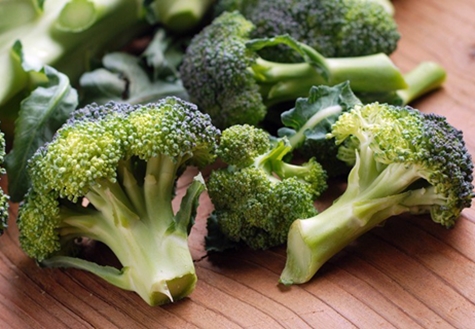
The first stage of systematization is the division of cruciferous varieties into ripening periods:
- An early ripe vegetable grows until the head is fully ripe from 65 to 90 days. Sowing seeds in seedling boxes is carried out on March 7-15, and they are transplanted into the ground 40-45 days later. Early maturing broccoli from the garden is not recommended to be canned and processed - it is ideal for eating raw. Among the best varieties are called Tonus, Lord, Monaco;
- The characteristics of mid-ripening cabbage, in comparison with early-ripening ones, are more optimistic - this variety already lends itself to fermentation, but from the moment of sowing to harvesting, you will have to wait 110-130 days.Often, mid-season broccoli cabbage is harvested after the first frost on the soil. There are varieties of Gnome and Fortuna;
- Late ripening cabbage is planted in the second half of May, on thoroughly warmed up soils. Grown cabbage is usually removed for 145-150 days, and the keeping quality of this species is simply incredible - about six months. The varieties that fall under this description are Marathon, Agassi.
In addition to the simplest division according to the ripening period of broccoli, the cultivation characteristics also depend on whether the seeds were processed in the factory before going on sale. Among the labels on the packaging indicating this fact, you can read three types of clarification:
- Normal - that is, requiring processing;
- Instructed - protected by a special polymer layer;
- Pelleted - large, artificially rounded and as if encapsulated seeds.
The latter type of seed greatly simplifies the care of broccoli during the germination period.
Ordinary seeds are rarely injected into the hole one by one due to their small size, and subsequently, broccoli in the garden or in the seedling box must be thinned out. Dragee granules eliminate this inconvenience due to their convenient shape, and they do not require a transplantation stage, since they are introduced directly into the open ground. Growing and caring for broccoli is independent of seed type as long as all broccoli planting instructions are followed.
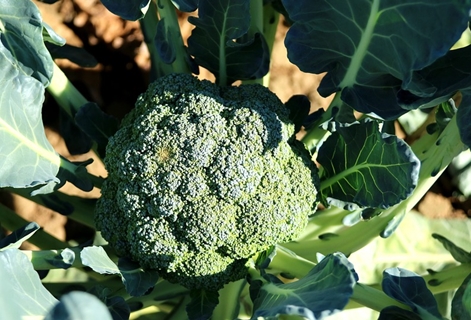
How to prepare seeds
How to grow broccoli from regular planting stock? It is dangerous to plant untreated seeds right away - most likely, the grains will die from fungus or pests, moreover, they need to be hardened and stimulated. The actions of a competent gardener can be built according to the following algorithm:
- Initial sorting, soaking in pale pink potassium permanganate and washing twice - after bathing in a manganese solution, the seeds may turn red - it's not scary;
- Contrast bathing: first, the seeds are dipped in hot water for 20 minutes (50 C) water, then, for 5 minutes - in very cold. After that, the seeds in a saucer of water are removed to the refrigerator, where they are kept for 8-12 hours;
- After hardening, prophylaxis of future broccoli cabbage from pests is carried out. The seeds are soaked in one of the solutions, the dilution of which must correspond to the instructions attached to the preparation. These are: "Epin", "Albit", "Agat-25".
Gardeners, who deny the chemistry in growing vegetables, prevent possible cabbage diseases without using commercial means - for example, keeping the seeds for 24 hours in the juice of a three-year-old medicinal aloe.
How to grow seedlings
How to grow broccoli from seedlings? There are two options here - at home and in a greenhouse. The second option (greenhouse planting) is more optimal, since you can get much more plants, and they will be prepared much better for environmental factors than "home" babies. Seeds are planted in the soil from the 20th of April to the first half of May, and after a month most of the seedlings have 6 leaves, which means they are ready to be transplanted to a permanent place. Most often, this method is used for mid-season varieties.
Before planting broccoli cabbage at home, you need to prepare a box, the depth of which will be at least 25 cm filled with soil. The soil should be loose, breathable, poured onto a thick drainage layer. How to plant seeds? - in grooves spilled with water or separate holes, also damp. The main thing is that the distance between the grains is at least 3 cm.
The temperature until the moment of germination is kept within 18-21 C, after the appearance of greenery 10-13 C. Air humidity should be constant, at least 60%.
Do I need to make a dive? - mandatory, and in disposable cups or pots made of peat.After the procedure, the plants are allowed to get used to the new state for several days and then they are fed with gentle liquid fertilizers, which include boron.
The vegetable is transplanted into the ground when the leaves get stronger, and there are at least five of them. This happens approximately 37-43 days from planting the seeds.
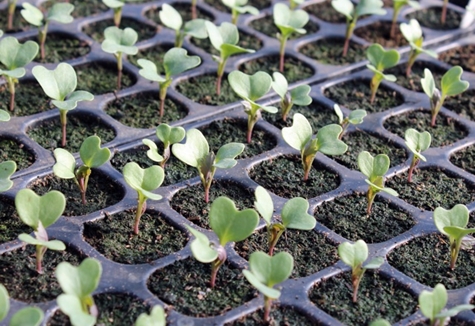
Planting broccoli outdoors
They take care of the preparation of the beds for seedlings in advance and, first of all, by measuring the acidity of the soil and reducing it as much as possible with a positive test result. The optimal pH level for cabbage to grow without pathologies is from 6.7 to 7.4 units. Over-acidified soils are one of the main reasons why cabbage stops growing and leaves turn red or yellow.
It is advisable that the seedlings be planted in open ground in the evening, keeping a distance of 30 cm between shoots and 50 cm between rows. Fertilization with minerals is applied to each hole before the seedling is there; then the plant is sprinkled with earth, without touching the lower leaves. It is necessary to prepare a film so that in case of frost, immediately cover the beds.
Broccoli cabbage in the first two weeks after planting increases sensitivity to cold and even at a temperature of -1 With the plant suffers and dies.
If planting is carried out by seeds, then special microclimatic conditions should be created in which the sprout will be comfortable. An optimal microclimate is achieved using a plastic bottle with a cut off bottom, which is immersed in the soil with a cut, thus enclosing each seed. Further watering and, if necessary, treatment of plants, as well as feeding broccoli cabbage, take place through the bottleneck. Remove protection after the formation of the third leaf on the seedling.
If more than one sprout happens to be in one hole, the extra stems will have to be removed. It is impossible to pull the plant out of the ground, since the root system of the "extra" seedling will pull the desired sprout along with it - we pinch off the weak sprouts, leaving the strongest one.
Outdoor seedling care
How to grow broccoli cabbage? No new procedures for the task of how to grow this crop are provided - the cabbage will need to be huddled several times, periodically loosened 6-8 cm in depth, watered and, which is not necessary for colored and white-headed crops and is important for broccoli, often irrigate in the heat leaves and inflorescences of a vegetable from a spray bottle.
Actually, abundant spraying can replace 70% of all irrigations - with this method of soil moistening, loosening will be needed much less often, and water consumption will become less. This can be done every day, on cloudy, rainless days - once every 36 hours.
Feeding a vegetable with manure is possible only after the latter has been diluted to a state of slurry. If you do not observe the dilution concentration of at least 1: 4, then almost immediately on the cabbage leaf you will notice the symptoms of a burn. The first two dressings are best done with a mullein solution (13-14 days from planting) and nitrophosphate (4 teaspoons), diluted with 2 grams of boron in a bucket of water - this is done already when the head is formed. The specified amount of liquid is distributed over 5 bushes.
The last fertilizer is applied in August, and the largest fertilizing bushes are given exactly as much as the weakened ones. Diluted in a bucket of water: 0.04 kg of superphosphate, 0.02 kg of nitrate, 0.01 kg of potassium sulfate.
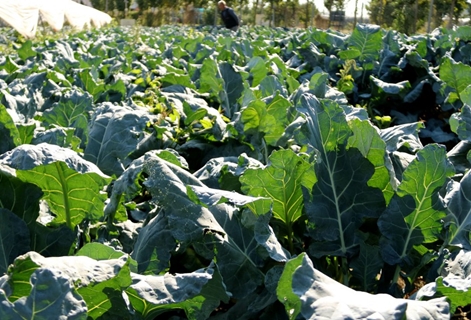
How often you need to spud cabbage depends on the evenness of the beds, the looseness of the soil and the method of watering. The lower leaves before the first procedure can be removed altogether in order to prevent them from rotting, otherwise the owner independently determines the need and frequency of strengthening the stem. With drip irrigation, for example, the soil collected around the stem does not erode for a very long time, but when watering from a hose, the roots quickly become bare and cabbage often has to be treated from pests that quickly settle into the base of the plant.
And finally, it is very important - is it necessary to remove the stepsons, to carry out the so-called “pinching” procedure at the vegetable? Let's explain - the third feeding is carried out according to the time when it is planned to harvest broccoli in just a couple of days.This is done in order to activate the growth of small cabbage inflorescences on the lateral processes, and therefore, it is simply illogical to cut off stepchildren from broccoli.
Of course, you will not be able to collect the same crop a second time, but why not let the vegetable grow further, if the taste of the small inflorescences is no worse than the main ones?
When to harvest broccoli depends on the variety you choose and, accordingly, the planting period. The latest varieties are removed after frost. They are also the most resistant to storage. The early species are completely unsuitable for these purposes - after 10-15 days the inflorescences will begin to rot, so it is better to sprinkle them with water immediately after collection and freeze them.
Heads of cabbage collected in the intermediate autumn period - at the end of September, beginning of October, may well lie in the refrigerator until the New Year. For gardeners who love growing this easy-to-care vegetable, it is better to master different types of its preservation - and then tasty and healthy broccoli will delight you all year round.

